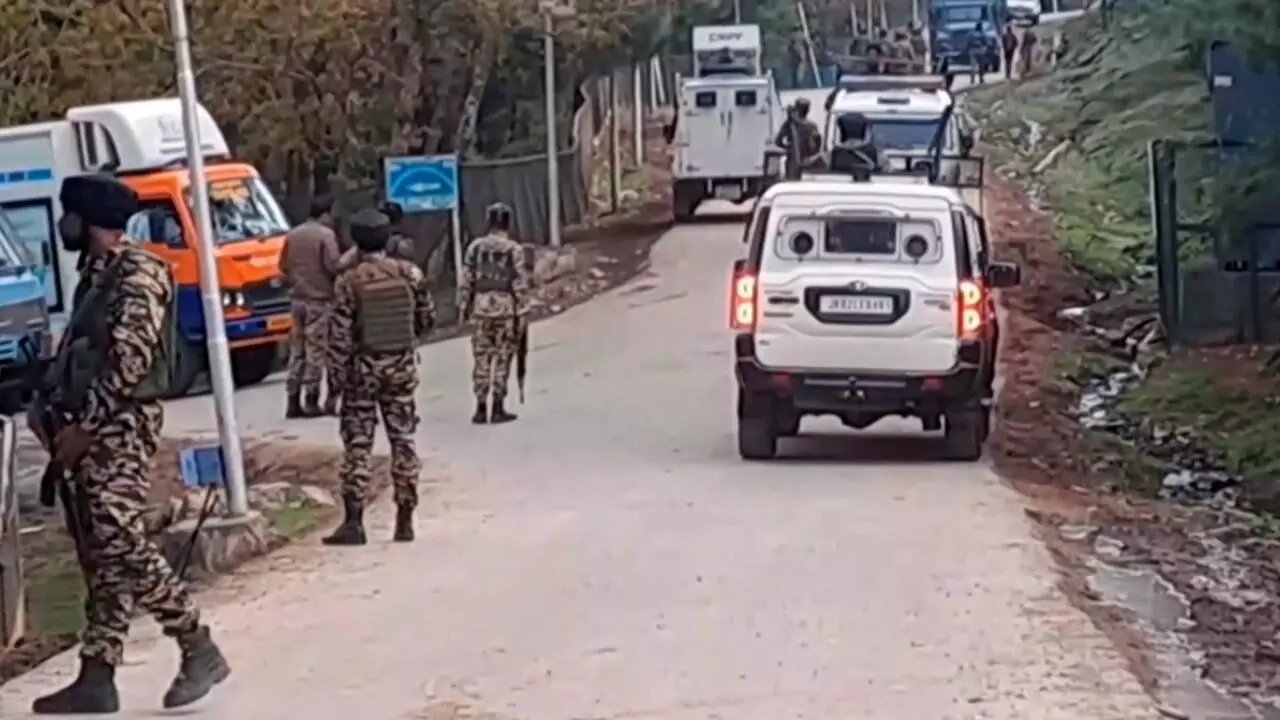TRENDING TAGS :
Pahalgam Terrorists Still at Large as Manhunt Continues
Despite India’s retaliatory Operation Sindoor and a robust crackdown, the security forces are yet to apprehend or neutralize the perpetrators.
New Delhi. Three weeks after the devastating terror attack on April 22, 2025, in Baisaran Valley near Pahalgam, which claimed 26 lives, mostly tourists, the killers remain at large. The National Investigation Agency (NIA) and security forces are intensifying a massive manhunt for the four to six Lashkar-e-Taiba (LeT)-linked operatives, suspected to be hiding in south Kashmir’s dense forests or possibly having fled to Pakistan. Despite India’s retaliatory Operation Sindoor and a robust crackdown, the security forces are yet to apprehend or neutralize the perpetrators.
The NIA has identified three key figures behind the attack: LeT chief Hafeez Saeed and his deputy Saifullah Kasuri, both believed to be in Pakistan, and Hashim Moosa (alias Suleman), a former Pakistani para-commando turned LeT operative, suspected to be hiding in south Kashmir. Moosa, who infiltrated India in 2023, is also linked to earlier attacks in Ganderbal (October 2024, seven killed) and Baramulla (four security personnel killed). Additionally, four terrorists directly involved in the attack,two Pakistani nationals, Ali Bhai (alias Talha Bhai) and Asif Fauji, and two local Kashmiris, Adil Hussain Thoker and Ahsan, remain unaccounted for.
Security sources indicate that the terrorists may be “self-reliant,” carrying provisions to avoid detection in the forests of Baisaran, Taranau Haptgund, or Dawroo. Their alleged use of encrypted satellite phones with short-range transmissions has complicated tracking efforts. The NIA suspects they conducted reconnaissance in Pahalgam from April 15, staying in Baisaran Valley for at least 48 hours before the attack, supported by a network of over 2,500 overground workers (OGWs). Despite detaining 250 suspects and interrogating thousands, no confirmed arrests of the primary attackers have been reported.
The Jammu and Kashmir Police have escalated efforts, announcing a Rs 20 lakh reward for information leading to Moosa’s capture, with assurances of informant anonymity. Posters and sketches of the suspects have been widely circulated, but survivors’ accounts suggest the terrorists blended into the crowd before herding victims toward armed accomplices, indicating meticulous planning and local support. The National Investigation Agency has uncovered that the Lashkar-e-Taiba linked terrorists used high-resolution satellite imagery, with orders for Pahalgam images from a U.S.-based firm peaking two months before the attack.
Operation Sindoor and Security Crackdown
On May 7, 2025, India launched Operation Sindoor, targeting nine LeT and Jaish-e-Mohammed terrorist sites in Pakistan and Pakistan-occupied Kashmir (PoK). The operation destroyed training camps in Muridke and Bahawalpur, but there is no confirmation that the Pahalgam attackers were neutralized.
In Kashmir, security forces have cordoned off Baisaran Valley, conducted searches at 30 locations in Srinagar, and demolished homes linked to suspected militants, though this was later halted amid criticism. The NIA has appealed for public assistance, releasing phone numbers for tips and collecting video evidence to trace the terrorists’ movements. Despite these efforts, the lack of confirmed kills or apprehensions has raised questions about intelligence lapses, as the terrorists scouted multiple sites (Aru Valley, Betaab Valley, and an amusement park) before choosing Baisaran due to its lighter security.
Challenges and Ongoing Efforts
The NIA’s investigation points to Pakistan’s ISI and military involvement, with sleeper cells and OGWs providing critical logistical support. A former sleeper cell operative revealed that such attacks require months of planning, with local operatives supplying intelligence on security deployments. The terrorists’ ability to evade capture suggests either robust local backing or successful exfiltration to Pakistan, though no evidence confirms the latter.
Public sentiment, as seen in X posts, is marked by anger and urgency, with unverified claims pointing to Pakistan’s military leadership as masterminds. The NIA continues to analyze forensic evidence and CCTV footage, while security forces maintain a heavy presence in Anantnag. The failure to apprehend the terrorists underscores the complexity of combating well-coordinated terror networks in rugged terrain.


